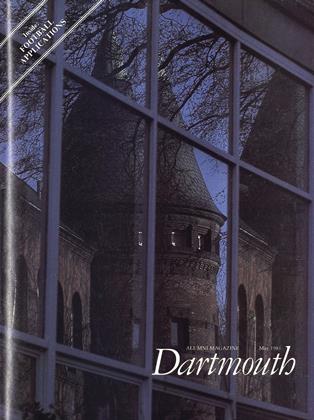Robert Paulson '45, BM/E's ENG/EFP/EPP Handbook. Broadcast Management Engineering, 1980. 300-plus pp. A guide to electronic newsgathering, electronic field production, and electronic post production for the 1980s. Subjects covered include new developments in electronic hardware; cameras, lenses, and lighting; and editing and post-production systems. The book contains several hundred illustrations as well as appendices outlining TV standards and listing bibliographical and reference materials.
Berthold Eric Schwarz M.D. '46, Psychic-Nexus: Psychic Phenomena in Psychiatry andEveryday Life. Van Nostrand Reinhold, 1980, 308 pp. Of greatest interest perhaps to physicians, psychologists, and behavioral scientists, the book provides a scientific analysis of the nature of extrasensory communication. A practicing psychiatrist, Dr. Schwarz examines such verified psychic events as telepathic episodes between parent and child, telepathy at time of death, and paranormal episodes between doctor and patient, and he concludes with an analysis of the role of parapsychology in psychotherapy and the study of psychosomatic illness. Dr. Schwarz has served as a fellow in psychiatry at the Mayo Foundation and has written several books on telepathy and child psychology.
Robert Winter '46, The California Bungalow. Hennessey and Ingalls, 1980. 96 pp. Few architectural forms more clearly reflect the aesthetic tastes and cultural and social aspirations of early 20th-century Americans than the bungalow. Though the craze for building bungalows swept the nation bungalow motor courts, bungalow schools, even bungalow churches were built-it all began in Southern California. Accordingly, in a book which is as much social as it is architectural history, Winter traces the evolution of this distinctly American artifact from its source. Only a few have survived the bulldozer and the wrecking ball, and one of Winter's aims is to encourage preservation of an important aspect of our architectural heritage. Winter, who teaches at Occidental College, lives in a Pasadena bungalow that is listed in the National Register.
David C. Baldus '57 and James W. L. Cole '60, Statistical Proof of Discrimination. McGraw-Hill, 1980. 368 pp. "Our primary goal," the authors write, "is to give judges and lawyers conducting discrimination litigation the background to comprehend and assess the reliability of the numbers they encounter." Their second major goal was to give social scientists and statisticians "an appreciation of the differing functions of quantitative proof in discrimination cases and in scientific inquiry, and a grasp of the influence that the law should have over their choices of research design and statistical methodology." If it is true, as the legal maxim has it, that "figures speak and when they do courts listen," Baldus and Cole should catch a great many juridical ears. Their collaboration began when Baldus, a law professor at the University of lowa, and Cole, a consulting statistician, chanced to meet in lowa City a few years ago at a meeting for Dartmouth's Third Century Fund.
William N. Kelley, Edward D. Harris Jr. '58, Shaun Ruddy, and Clement B. Sledge, eds., Textbook in Rheumatology. W. B. Saunders, 1980. Illustrated, 2,054 pp. An exhaustive new textbook that includes contributions not only by the editors but also by no less than 140 other international specialists in the field of rheumatology. The British Medical Journal calls it "a most impressive publication in every way, ... a gigantic canvas." "The amount of information in this book is formidable and the detail far in advance of other similar textbooks,today." Harris is professor of internal medicine at the Medical School.
Ben Bennani '68, Camel's Bite. Jelm Mountain Press, 1980. 32 pp. The fourth book of poems written by Bennani, who is a teacher and founder of Paintbrush, an international journal of poetry and translations. As in his previous books, the literal settings for Bennani's poems in Camel's Bite are often his native Middle East. In a truer, extra-literal sense, however, his settings are internal; his poems come - sharp, hard, often selfmocking from that interior landscape of sensuality and intellect, image and word, where he lives. "I am a travelling poet," he writes, "A prophet on wheels." A prophet? Well, maybe. But a spiritual - and spirited traveler Bennani assuredly is. His poems, then, record the sights and sounds along the way; they become a kind of ex post facto baedeker.
 View Full Issue
View Full Issue
More From This Issue
-
 Feature
FeatureTelling Another's Tale
May 1981 By Gregory Rabassa -
 Feature
FeatureThe Last of the Liberals?
May 1981 By Frank B. Wilderson -
 Feature
FeatureOnce King and Future President
May 1981 By David Shribman -
 Article
ArticleMind for Adventure
May 1981 By Don Rosenthal '81 -
 Article
ArticleGreat Issues, Etc.
May 1981 -
 Sports
SportsThe Club Set
May 1981 By Brad Hills '65
Article
-
 Article
ArticleCOLLEGE NOTES
May, 1909 -
 Article
ArticleThe July double number of THE MAGAZINE completed publication for the year,
November 1918 -
 Article
ArticleSan Francisco Pow Wow
June 1938 -
 Article
ArticleNews Makers
May/June 2012 By BONNIE BARBER -
 Article
ArticleThe Undergraduate Chair
JUNE 1973 By DREW NEWMAN '74 -
 Article
ArticleThe Fight
Sept/Oct 2000 By TOM SLEIGH

